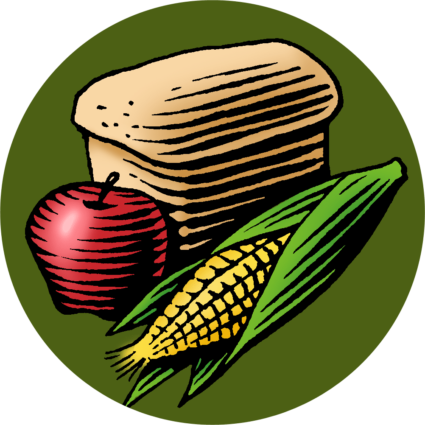Selling SNAP-Eligible Foods

Community Supported Agriculture (CSA) at the Market
- What is a CSA?
- Can farmers markets and/or vendors sell CSAs to SNAP customers?
- Are there additional SNAP rules or restrictions that apply when offering CSA membership to SNAP customers?
- How can a CSA provider ensure that a SNAP customer is committed to the program for the duration of the season, given the 14-day restriction on pre-purchases?
- What happens if a SNAP customer cannot pay for a share?
-
What is a CSA?
CSA stands for “community supported agriculture.” CSAs are programs in which an individual pays a farm for a membership that entitles him or her to a “share” of the farm’s harvest – commonly a set quantity of raw foods made available to the member for pick-up on a periodic (typically weekly) basis. CSAs are becoming increasingly diversified, providing members with vegetables, fruit, meat, and dairy.
Since many CSA farmers are also vendors at farmers markets, the markets may serve as a pick-up point for CSA members to collect their shares. Additionally, some markets have started to offer their own CSAs, allowing customers to purchase a bundle of products from multiple vendors without having to visit each vendor’s stall.
Back to questions
-
Can farmers markets and/or vendors sell CSAs to SNAP customers?
Yes. There are two kinds of CSAs at farmers markets. Either the farmers market operates its own CSA through which the market sells food grown and produced by its vendors, or the farmers market allows vendors to sell and distribute their own farm-CSA shares at the market.
If a SNAP-authorized farmers market operates a CSA, it must ensure that CSA shares offered to SNAP customers contain only SNAP-eligible items. The market processes the SNAP EBT transaction on its POS device and provides market currency or a receipt to the customer to provide to participating vendors in exchange for CSA goods. The market then reimburses the participating vendors accordingly.
If a vendor at a farmers market operates its own CSA, it has two options:
- If the vendor is SNAP authorized and accepts SNAP EBT payments directly through his or her own POS device, the vendor may simply charge SNAP customers for CSA shares.
- If the vendor is not SNAP authorized but the market is SNAP authorized and capable of processing SNAP payments on a vendor’s behalf, the vendor may request that the market process SNAP payments for the vendor’s CSA shares.
In either case, vendors must ensure that they are including only SNAP-eligible items in CSA shares purchased with SNAP benefits. Additionally, farmers markets and vendors must comply with pre-purchase restrictions, as discussed below.
Back to questions
-
Are there additional SNAP rules or restrictions that apply when offering CSA membership to SNAP customers?
Yes. Namely, SNAP customers face limitations on their ability to use SNAP benefits to pay for food far in advance of pick-up and to pay CSA-related fees.
To explain: in typical CSA practice, customers make one up-front (pre-harvest) payment (often cash or check) to purchase a membership that entitles them to shares of a season's worth of farm products. However, when using SNAP benefits:
- First, any prepayments must be within 14 days of pick-up. Therefore, unlike the typical CSA model where the customer pays all up-front, the SNAP CSA customer must make multiple payments if using their SNAP benefits to pay for the share. SNAP retailers may not process SNAP/EBT payments more than 14 days before providing the SNAP customer with the purchased goods.
- Second, membership fees are not SNAP eligible. Customers may not use SNAP benefits to pay for a CSA membership fee. SNAP benefits may be used only for the food itself.
Back to questions
-
How can a CSA provider ensure that a SNAP customer is committed to the program for the duration of the season, given the 14-day restriction on pre-purchases?
SNAP EBT payments may not be processed more than 14 days before the SNAP customer receives the purchased goods. This prevents SNAP customers from paying for a full CSA season up-front, as most CSA customers do. To secure a SNAP customer’s commitment to a full CSA season, the CSA provider (farmers market or vendor) may request that a SNAP customer:
- Commit in a signed written agreement to participating in, and paying for, a full CSA season (without specifying the source of funds);
- Provide a non-SNAP deposit (cash or check) that will be refunded when the season ends.
Any written agreement or required deposit should not be unnecessarily burdensome on SNAP customers, and should be oriented toward encouraging commitment to the CSA program.
Back to questions
-
What happens if a SNAP customer cannot pay for a share?
It’s possible that a SNAP participant may run out of SNAP funds, particularly toward the end of the month (as SNAP benefits are distributed on a monthly basis). By law, SNAP benefits cannot be used to pay for items bought on credit. Accordingly, a CSA provider (farmers market or vendor) cannot waive the CSA fee one week (as credit) with the intent to accept payment the following week.
To accommodate the possibility that any customer might not be able to make a CSA payment, a CSA provider might include a provision in a CSA agreement whereby a customer may receive a partial share in exchange for a discounted non-SNAP fee, or forfeits the share until he or she can begin making full payments again.
Back to questions
For more information regarding CSAs accepting SNAP, see The CSA Farmer’s Nationwide Guide to Accepting SNAP/EBT Payments by Zenger Farm (2013).
